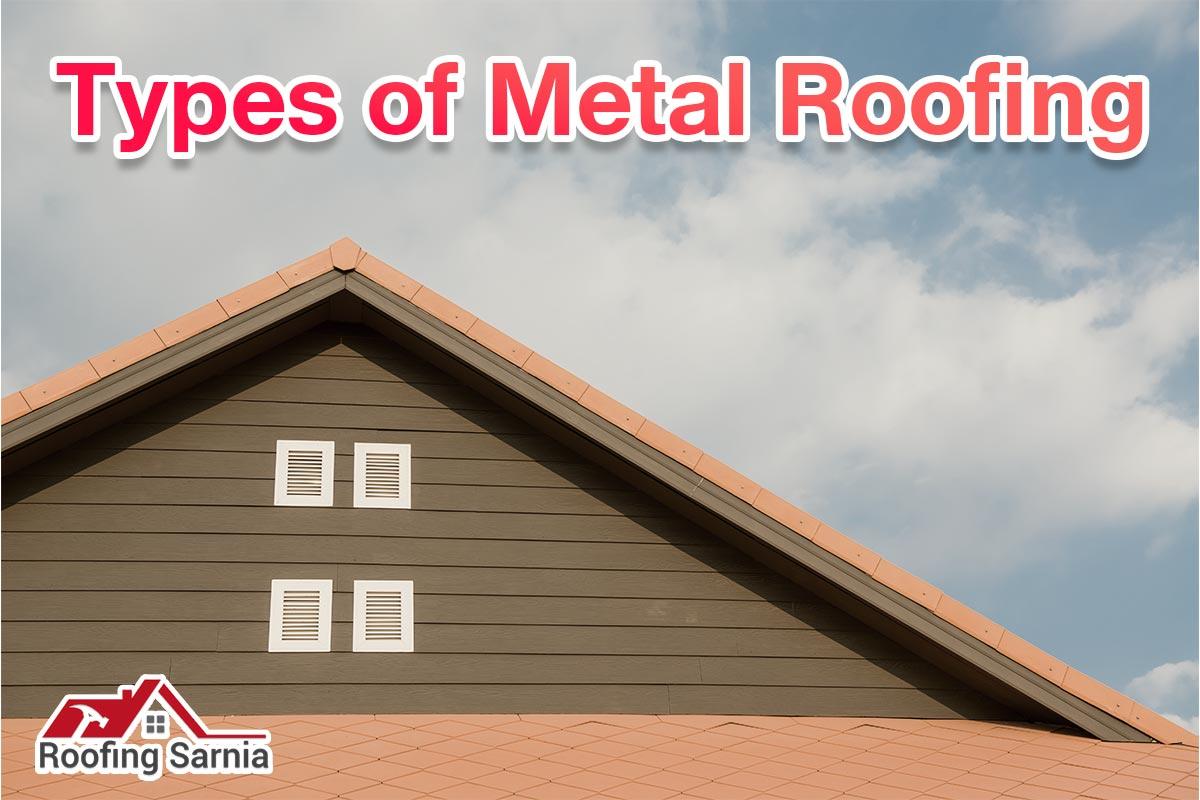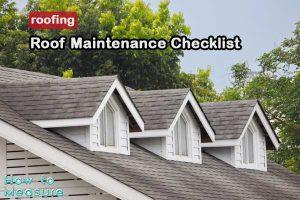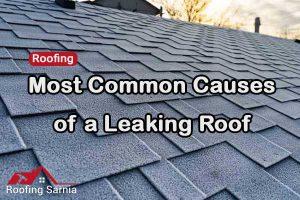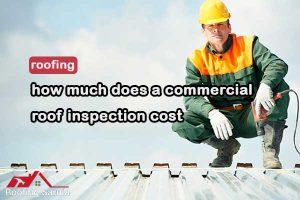Metal roofing has become an increasingly popular choice for homeowners and businesses alike due to its durability, longevity, and aesthetic appeal. Among the myriad of options available, five standout materials dominate the market: Aluminum, Copper, Tin, Zinc, and Steel. In this article, we will delve into each of these materials, discussing their respective pros, cons, and costs. If you’re based in Sarnia, ON, and are looking for metal roofing services, we invite you to explore our website for more details.
Aluminum Roofing Panels
Light yet robust, aluminum is a standout contender in the world of metal roofing. Not only is it the lightest roofing material available, but its strength-to-weight ratio surpasses many of its counterparts. This translates to a durable roofing material that offers ease during installation due to its reduced weight.
![5 Types of Metal Roofing [Pros, Cons & Costs] 1 Aluminum Roofing Material](https://roofing-sarnia.com/wp-content/uploads/2023/09/Aluminum-Roofing-Material-1024x683.jpg)
Pros of Using Aluminum Roofing Panels:
- Corrosion-resistant: Aluminum naturally forms a protective oxide layer, making it especially resistant to rust and corrosion. This is particularly beneficial for homes in coastal areas where salt spray is prevalent.
- Lightweight: Its reduced weight means easier handling and less stress on the roof structure, potentially leading to longer-lasting support systems.
- Malleable: Aluminum can be easily shaped into various forms and designs, providing flexibility in architectural possibilities.
Cons of Aluminum Roofing Panels
- Higher Cost: While aluminum offers many benefits, it comes at a premium. Its price is considerably higher than some other roofing materials, particularly steel.
- More Prone To Denting: Despite its strength, aluminum is softer than steel, making it more susceptible to denting from hail or fallen debris.
- Less Availability and Color Options: Compared to more common materials like steel, aluminum may have fewer color choices and might be harder to source in some regions.
Costs of Aluminum Roofing Panels (as of November 2023)
When considering aluminum, it’s crucial to understand that it typically costs around 35% more than steel roofing.
Corrugated Aluminum Roofing: Priced between $5.00 and $7.00 per sq. ft. for the material. However, when you factor in installation, the cost may range from $9 to $13 per sq. ft.
Standing Seam Aluminum Roofing: While the material itself ranges from $6.00 to $10.00 per sq. ft., the inclusive price with installation can range from $11 to $17 per sq. ft.
Note: Prices are indicative of November 2023 and may vary based on several factors.
Copper Roofing
A hallmark of timeless beauty, copper roofing is famed for its ever-evolving appearance. Starting with the radiance of a fresh penny, copper roofs undergo a color transformation over time, transitioning to hues of blue-green or deep brown, depending on the environment. Copper roofing is versatile, coming in forms such as tiles, shingles, panels, and sheets.
![5 Types of Metal Roofing [Pros, Cons & Costs] 2 Copper Roofing materials](https://roofing-sarnia.com/wp-content/uploads/2023/09/Copper-Roofing-materials-1024x683.jpg)
Pros of Copper Roofing
- Attractive: Copper’s natural sheen and its ability to patina over time give it a unique, evolving beauty that many homeowners adore.
- Extra Long Lasting: With proper care, copper roofs can last for decades, often outliving the structure they cover.
- Corrosion Resistant: Similar to aluminum, copper forms a protective layer, ensuring it remains rust-free.
- Lightweight: Copper roofing, being lighter than traditional materials like slate or clay tiles, puts less strain on building structures.
- Easy to Install: Due to its malleability, copper can be shaped to fit intricate roof designs with relative ease.
- Traditional in Appearance: A copper roof adds an antique charm to structures, reminiscent of old-world buildings.
- Longer Lifespan than Asphalt Shingles: Not only is it visually appealing, but its longevity surpasses common asphalt shingles.
- Economical Alternatives: While genuine slate and clay tiles can be heavy on the pocket, copper provides a lighter and less costly alternative without compromising on elegance.
Disadvantages of Copper Roofing:
- Denting: Copper, being soft, can be prone to dents from external impacts.
- Expensive: Quality comes at a price. Copper roofing is one of the pricier options in the metal roofing market.
- Less Availability: Due to its niche appeal, copper might not be as readily available as more mainstream materials.
Cost of Copper Roofing (as of November 2023):
Copper holds a premium position in the metal roofing market, with prices often tripling those of steel. The only material closely matching its price point is zinc.
Corrugated Copper Roofing: While the material costs between $13 and $20 per sq. ft., comprehensive costs, including installation, may range between $19 and $28 per sq. ft.
Standing Seam Copper Roofing: The material itself can be priced from $15 to $25 per sq. ft. However, once installation is considered, costs might soar between $23 and $35 per sq. ft.
Note: The prices mentioned are reflective of November 2023 and might change depending on various factors.
Steel Roofing
Often, when people mention “metal roofing,” they’re primarily thinking of steel. That’s because, although various metals are utilized for roofing, steel predominantly comes to mind. Steel is an amalgam crafted from iron, infused with other elements, making it robust and versatile. Historically, steel roofing was mainly spotted atop commercial structures, but modern homeowners are rapidly embracing it for its economic feasibility, long-lasting attributes, and the minimal care it demands.
Metal roofs can be categorized into diverse panel designs, each influencing its price, visual appeal, and mode of installation. Dive deeper with us into the specifics of these panel varieties in the subsequent section.
![5 Types of Metal Roofing [Pros, Cons & Costs] 3 Steel Roofing Material](https://roofing-sarnia.com/wp-content/uploads/2023/09/Steel-Roofing-Material-1024x683.jpg)
Pros of Steel Roofing Panels
- Longevity And Cost Effectiveness: Steel roofing offers enduring value. Due to its durability, it can last years, thus ensuring homeowners get great value for their investment.
- Low Maintenance: Say goodbye to frequent upkeep! Steel roofs require minimal maintenance, saving both time and resources.
- Durability: Built to withstand the tests of time, steel roofing can endure harsh weather conditions and stay strong.
- Resistance To Fires And Rotting: Safety first! Steel roofing doesn’t catch fire easily and resists decay, ensuring a secure shelter.
Cons of Steel Roofing Panels
- Less Corrosion Resistance: Steel, without proper coating, is prone to rust over time, especially in damp environments.
- Greater Weight: Compared to some other materials, steel panels can be relatively heavy, possibly demanding reinforced structural support.
- Lifespan: While durable, steel roofs might not outlast materials like copper or zinc.
Costs of Steel Roofing
Prices here reflect data from November 2023 and might evolve based on market fluctuations.
While metal or steel roofing is often the most budget-friendly option—costing about 35% less than aluminum and nearly a third of the price of copper or zinc—the actual cost can fluctuate. Here’s a breakdown:
Exposed Fastener Roofing Panels: Ranging from $2.00 to $4.00 per sq. ft.
Standing Seam Roofing Panels: Expect to spend between $3.00 to $5.00 per sq. ft.
Specialty Paint Finishes: Opting for two-tone paint systems can add an extra $1.00-$1.50 per sq. ft. to your bill.
On average, inclusive of both materials and labor:
Exposed Fastener Metal Roofing: Falls between $7 to $12 per sq. ft.
Standing Seam Metal Roofing: Estimated between $10 to $16 per sq. ft.
Tin Roofing
Tin roofing, historically significant, is essentially steel coated with tin, reinforcing the roof’s resilience against wear and tear. Introduced to the U.S. in the late 19th century, tin gained immense popularity due to its lightweight nature, making it convenient for installation. However, as aluminum entered the scene, the charm of tin roofing began to wane. Today, if you’re considering a ‘tin’ roof, you’re likely referring to modern metal or aluminum variants.
Pros of Tin Roofing
- Lightweight: Tin roofs, due to their inherent lightness, reduce the load on structures.
- Easy To Install: Their weight combined with their design makes tin roofs a breeze to set up.
Cons of Tin Roofing
- Outdated Design: With advances in roofing materials, genuine tin roofing has largely become a relic of the past.
Zinc Roofing
Zinc roofing carries a unique allure, evolving in its appearance over time due to the patina process. While these roofs might be a common sight in European landscapes, they’re less prevalent in the U.S. because of their premium pricing.
![5 Types of Metal Roofing [Pros, Cons & Costs] 4 Zinc roofing material](https://roofing-sarnia.com/wp-content/uploads/2023/09/Zinc-roofing-material-1024x683.jpg)
Pros of Zinc Roofing
- Attractive: Zinc roofs, especially when they begin to patina, offer an aesthetic appeal unmatched by many materials.
- Long Lifespan: Durability is zinc’s forte, promising a roof that stands the test of time.
- Patina & Corrosion Resistant: Naturally forming a protective layer, zinc roofs resist corrosion effectively.
Cons of Zinc Roofing
- Costly: Quality comes at a price. Zinc roofing can dent your wallet significantly more than other materials.
- Chalking: Over time, zinc might exhibit a white powdery residue known as chalking, though it doesn’t compromise the roof’s functionality.
- Limited Availability: With fewer suppliers offering zinc, you might find it challenging to source, potentially increasing shipping expenses.
Costs of Zinc Roofing
In terms of pricing, zinc often parallels copper. However, for smaller projects, the cost can soar due to limited availability and shipping expenses. Here’s a cost approximation:
Corrugated Zinc Roofing: Priced between $13 to $20 per sq. ft.
Standing Seam Zinc Roofing: Expect to spend around $15 to $25 per sq. ft.
While zinc installation requires expertise, ensuring the choice of a seasoned installer is crucial. Costs, thus, can vary significantly.
On average:
Corrugated Zinc Roofing: Ranges from $19 to $28 per sq. ft.
Standing Seam Zinc Roofing: Lies between $23 to $35 per sq. ft.
Exploring Metal Roofing Styles
![5 Types of Metal Roofing [Pros, Cons & Costs] 5 Metal roofing styles](https://roofing-sarnia.com/wp-content/uploads/2023/09/Metal-roofing-styles-1024x683.jpg)
- Corrugated Metal Roofing: Characterized by its distinct wavy design, corrugated roofs are primarily made from aluminum, a choice driven by cost factors. This wavy structure enhances the strength of the material, giving users an affordable yet durable roofing solution. Typically, these roofs showcase exposed fasteners, adding to their industrial charm.
- Standing Seam Metal Roofing: These roofs present broad, flat panels punctuated by vertical seams. Hidden fasteners beneath these seams render a sleek, modern look. They’re a top pick for those favoring contemporary aesthetics.
- Stone-Coated Metal Roofing: Taking steel sheets as a base, these are coated with stone granules, mimicking the look of traditional roofing materials. Beyond mere aesthetics, stone granules enhance energy efficiency and suppress rain noise, negating the need for additional soundproofing.
-
Decoding Metal Roofing Fasteners
Securely anchoring metal roofs requires fasteners. You can either spot them as exposed fasteners or as concealed ones beneath the panels. The choice primarily hinges on aesthetic preferences. For instance, stone-coated metal roofs offer both styles, broadening design possibilities.
Final Thoughts
Metal roofing, with its multitude of options, promises both durability and aesthetic appeal. At Roofing Sarnia, we strive to educate and equip our readers with information to make informed decisions. Whether it’s steel, tin, or the premium zinc, each material has its merits. Consider factors like longevity, maintenance, and budget to find your perfect fit.
FAQ
Which metal offers the best strength for roofing?
Stainless steel, renowned for its robustness and resistance to corrosion, is an ideal choice. Its potential to last for over six decades positions it as a top pick for roofing.
Which metal roof boasts the longest lifespan?
Copper roofs take the crown, with some lasting up to a century or even two!
What factors should I consider when choosing a metal roof?
Beyond material choice, factor in style, panel design, cost, aesthetic preferences, and local weather conditions when selecting the right metal roof.
For more insights, reach out to our expert team at Roofing Sarnia! We’re here to guide you every step of the way.




